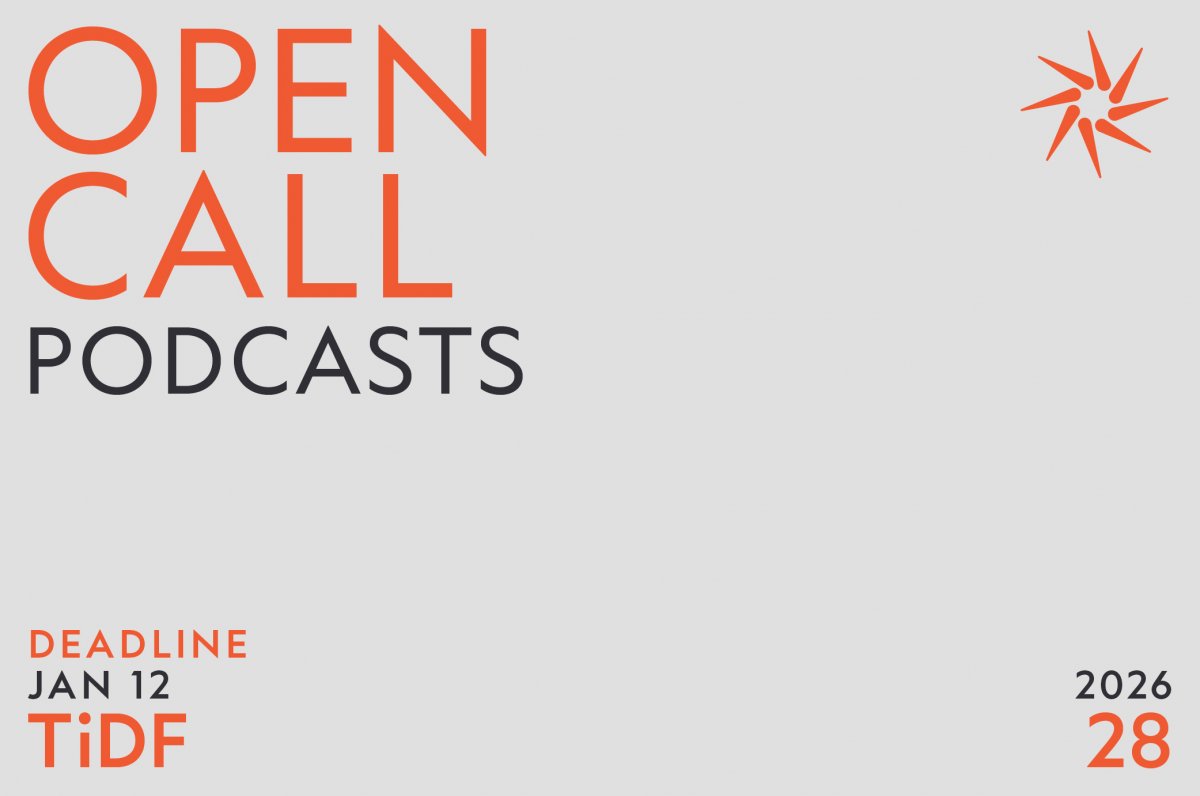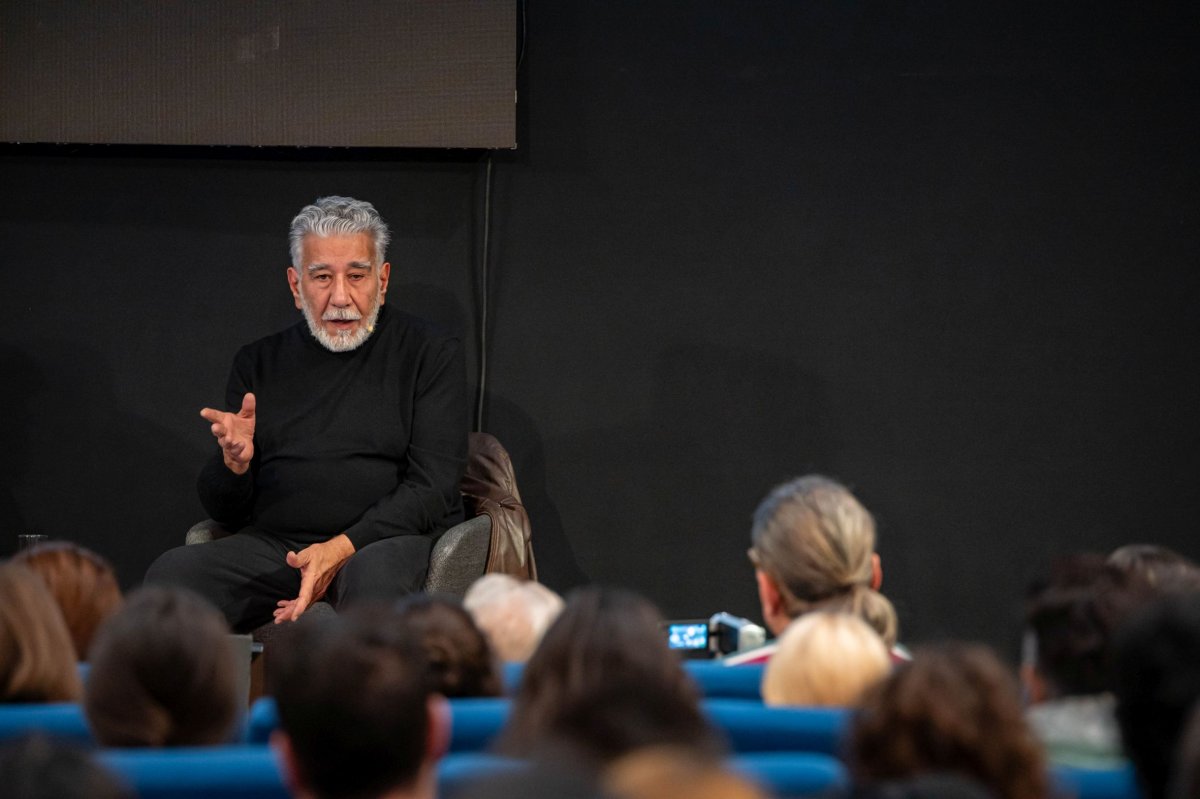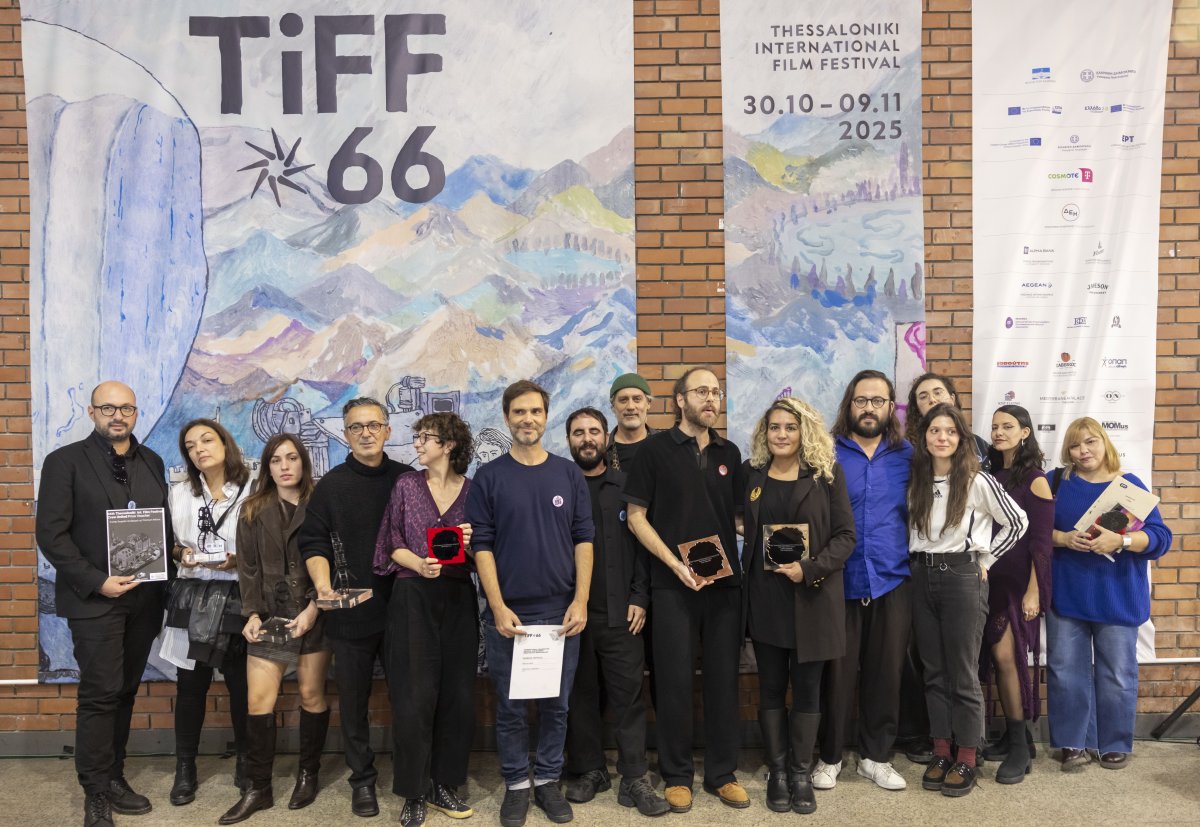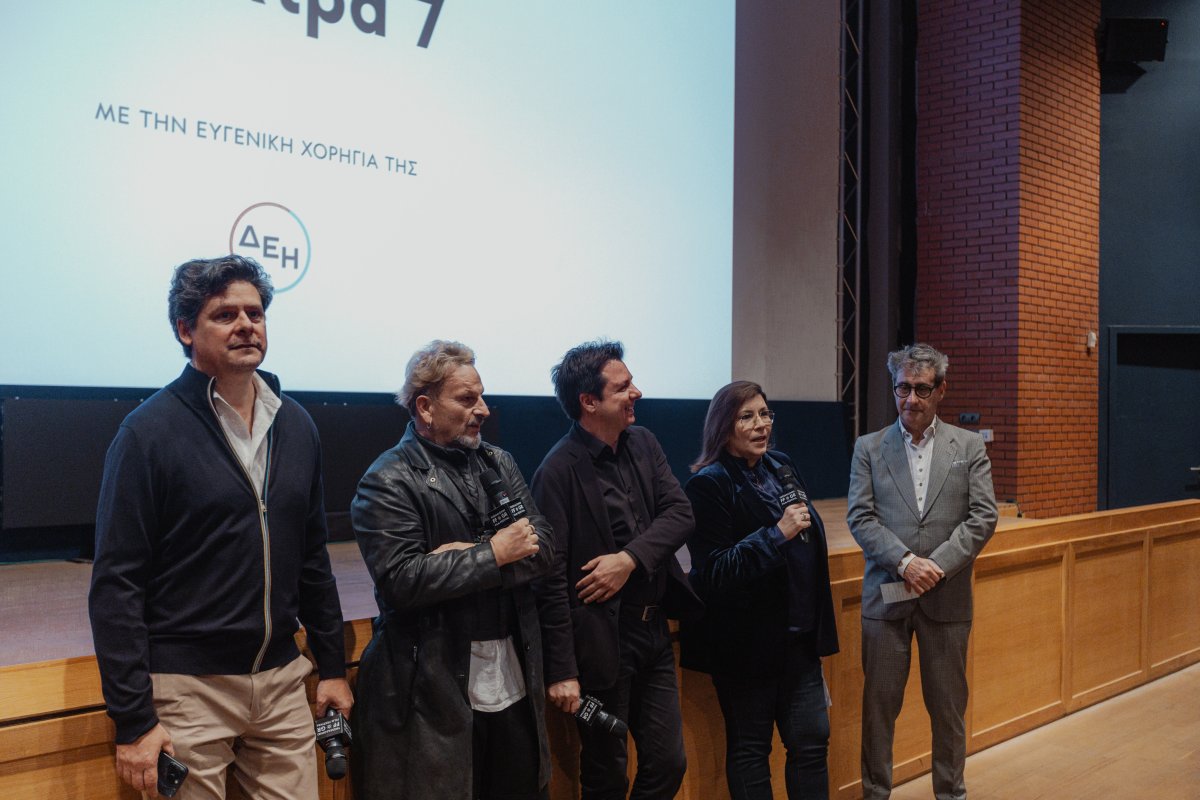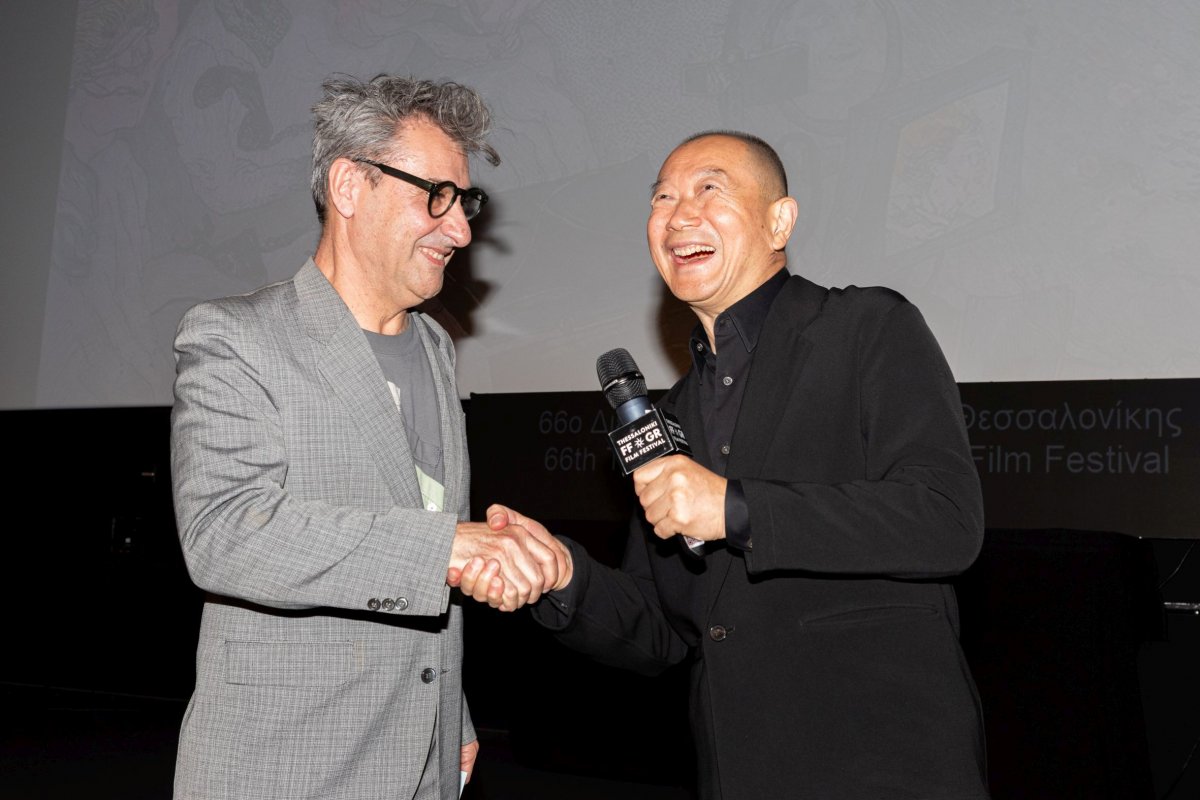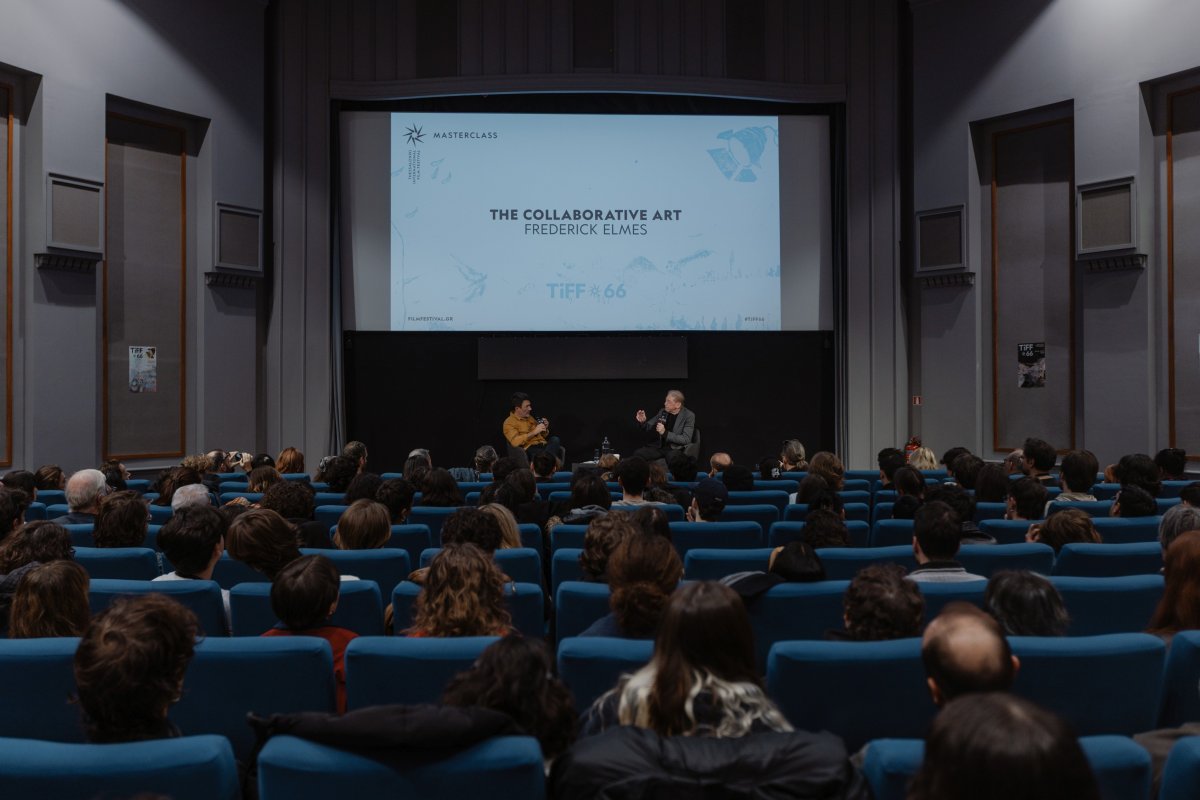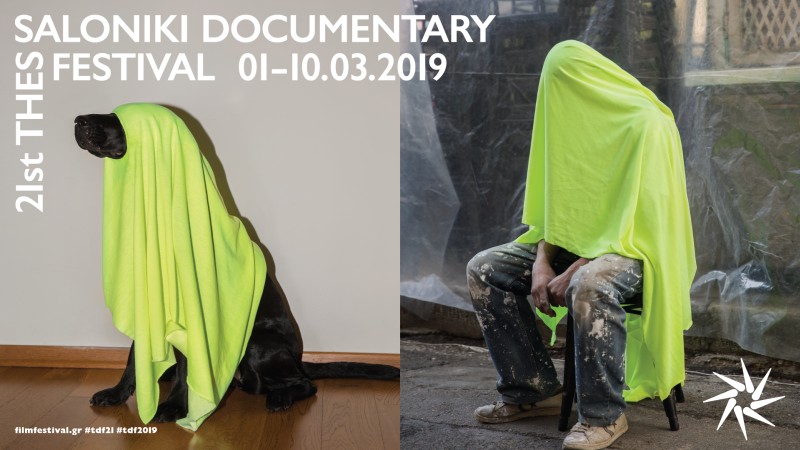62nd THESSALONIKI INTERNATIONAL FILM FESTIVAL
4-14/11/2021
Masterclass by Yorgos Mavropsaridis: The Brain is the Screen
Internationally acclaimed editor Yorgos Mavropsaridis, regular partner of Yorgos Lanthimos and Oscar nominee for his work in the film The Favourite, delivered a masterclass at Pavlos Zannas theatre, on Friday November 12. In his masterclass, titled “The Brain is the Screen”, Yorgos Mavropsaridis analysed the way in which editing encodes the narrative and communicates its messages to the viewer. Orestis Andreadakis, the artistic director of TIFF, raised the curtain of the event, welcoming both the audience and Yorgos Mavropsaridis, hailing the latter as “one of the best editors worldwide”.
Mr. Mavropsaridis thanked the Festival for giving the floor to the editors, and said that he borrowed the title of the masterclass from an excellent book by French philosopher and film theorist, Gilles Deleuze. "I remember an interview my colleague Yannis Chalkiadakis gave many years ago to Orestis Andreadakis at Cinema magazine. In the question “is there an editor that stands out for you?”, he replied "Mr. Mavropsaridis, because he grasps what attracts the audience". This has always been easy for me, I can understand within the first 20 minutes of the film, which are the most pivotal and crucial, if they film is interesting. I believe that the reason I chose this profession is the crystal-clear connection between how our mind perceives the world and how editing, using the same functions of the brain, constructs the world we see on the screen”, he said.
“Indeed, our brain is the screen, because it gives meaning to what we see, it also gives meaning to the world that surrounds us. What we see in cinema are static frames that overlap each other, creating a sense of movement. The saccadic movements of our eyes scan the environment, receive the electromagnetic information and construct the three-dimensional world that surrounds us. Everyone builds a world and lives in it. We do the same in cinema, while watching a movie: we take pieces and connect them to communicate certain information”, he mentioned.
He went on to comment that the models used by the brain are similar to those of cinema. “They change depending on the prevailing ideology. For example, Hollywood's classic cinema is connected to an objective narrative, a stability in the world we are in need of: the horizon is straight, God is almighty, and good battles against evil," he said. However, there are ideologies in the cinema that come to overturn and debunk our stereotypical perceptions of the world. "We often go to the cinema to confirm what we already know. And this is the pedagogical aspect of cinema: to bring us in touch with our prejudices", he said.
He also referred to the illusion of the three-dimensional world and colours: "In order to create colours, we need the three cones of blue, red and green to compose reality. This distinction, necessary for our survival, allows us to perceive different aspects of the world. Three-dimensional perception, which is also an illusion, is constructed inside the retina of the eye. Our stereoscopic vision takes the electromagnetic stimuli and sends them to the brain, which composes a three-dimensional view of the world", he commented.
Our brain is actually three-fold: the “old” brain, the reptilian brain that controls the autonomic nervous system and instincts, the mammalian brain, the emotional, we share with mammals and is responsible for all emotions, and finally the neocortex, responsible for cause-and-effect relationships. "All this is very similar to the ways of storytelling: we are always searching for a meaning that we try to compose, we need to put things in order and create cause-and-effect relationships. Ultimately, the brain creates its own truth. It confirms that we sit, for example, at a table, while the table is made of colourless atoms existing in a reality we cannot even perceive. The brain struggles to extract this information out of a fluid reality and settle chaos”.
All these information, he continued, are strongly related to cinema. "As Godard argues, the aesthetics is the ethics of tomorrow, in the sense that several decisions we take to make cinema are based on a pre-existing ethic," he said. Then, talking about his mentor and great filmmaker, Giorgos Panousopoulos, he recalled of a phrase imprinted in his memory: "From the moment the creator places the camera, he cuts a piece. We can't see the whole." This phrase is reminiscent of Susan Sontag's writings: "to photograph is to frame, and to frame is to exclude". However, despite any "omission" of the creator, as Eisenstein said, "the part will lead us to the Whole."
This "fragmentation" of reality lies in the fact that the director cuts the space-time continuum upon the beginning of the shooting. "The creator's shots, all subjective, have a code. The syntax of this code is eventually transferred to editing, where we define and structure time. We arrange the duration the shot, but not what the shot will contain. The content of the shot which is a self-existent entity. Depending on the intention and aesthetics of the director, we connect the shots and tell his story."
He then talked about the subjectivity of time and its connection to people's perception of art, which changed after the Second World War: "The narrative becomes more subjective, it contains a temporality and a point of view", he said. Then, he emphasized the importance of media awareness by the creator: "When we go to a movie screening, we are quite sensitive. We get rid of our suspicion; we experience the so-called suspension of disbelief. We become children in the movie theatre. We are vulnerable to what is appearing on the screen, and at that point the director's ethics is important. Editing, which transcends cinema and exists in other aspects of our lives, takes from mainly in our minds. The greatest narrator is our mind. Without the brain, there would be nothing. This ability of cinema to create a three-dimensional world is a simulation of the brain process."
Next, referring to his collaborations with directors in the past, he also talked about his work with Yorgos Lanthimos: "I feel bad to refer to films that I have edited without mentioning the director. Editing is a collaboration between director and editor, and our job is to follow the director’s vision. It was clear to me, during my collaboration with Yorgos Lanthimos that his narrative was searching for something different from the usual”.
"Some films illustrate an open universe," he said, "requiring the participation and co-creation of the audience. There is no objective film. Every time it is screened, it's a different experience. Within our experience, of course, we are faced up against our prejudices, we are influenced by our language and our environment. I love cinema that poses questions and challenges our prejudices, and I'm lucky enough to work with Yorgos Lanthimos, whose projects overturn everything taken for granted."
Then, Mr. Mavropsaridis showed some footage from films by Yorgos Lanthimos (The Favourite, The Killing of a Sacred Deer, Dogtooth) and explained the reasons they made specific choices regarding editing. Mr. Mavropsaridis, recalling a childhood memory, he said: “I remember when I was very young, I felt uneasy when my parents watched films of Nikos Xanthopoulos, there was a lot of crying, and I wouldn’t have a clue of what could possibly change. Nothing changed. People would go out and keep doing what they were doing." Subversive cinema, which poses questions and challenges pre-existing perceptions, creates strong emotions in the viewer, like a birth in the dark, and that is what helps us to develop. "Cinema is like a dream we see, as real as the colours, the scents, the flavours. It is the creation of the greater fiction writer: ourselves. In cinema, we may discover within ourselves something that defines our place in the universe", he concluded.



